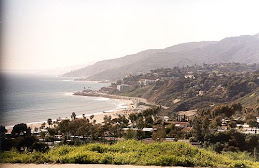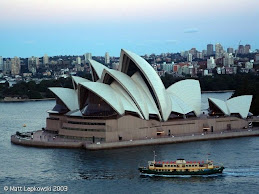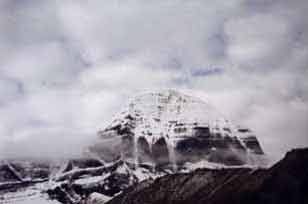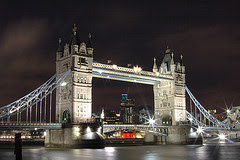1984 Riots: Charges Framed Against Sajjan Kumar July 7, 2010 A Delhi court today framed charges of murder and rioting against senior Congress leader Sajjan Kumar and others in connection with a 1984 anti-Sikh riots case in which six persons were killed in Sultanpuri here. Additional Sessions Judge Sunita Gupta, after finding prima facie evidence against the Congress leader and others, decided to record statements of witnesses from August 23. The court had on July one had ordered framing of charges in the case. The framing of charges paves the way for initiation of trial in a criminal case. Besides murder and rioting, the court also framed charges against Kumar, Brahmanand Gupta, Peru, Khushal Singh and Ved Prakash for the offence of spreading enmity between two communities. CBI had filed two chargesheets against Kumar and others on January 13 in the riots cases registered in 2005 on the recommendation of Justice G T Nanavati Commission which inquired into the sequence of events leading to the riots. The present case relates to killing of six persons in Sultanpuri in north-west Delhi in the aftermath of the assassination of the then prime Minister Indira Gandhi on October 31, 1984. The court has already started recording of statements of the witnesses in an another case involving Kumar and his nephew Balwant Khokkar, Girdhari Lal and Captain Bhagmal. Meanwhile, the court recorded the statement of a witness, Lal Chand Khemani, who was said to have bought a house owned by the victim, Jagdish Kaur, in a locality here in 1993. The witness was declared hostile by the prosecution following which he was cross-examined by the CBI. Jagdish Kaur, a key witness in the Delhi cantonment case, could not appear before the court because of her illness. She had lost five family members, including her husband, in the riots. RELATED STORY: Unpardonable Mistakes@ http://ultracurrents.blogspot.com/2009/11/unpardonable-mistakes.html |
Wednesday, July 7, 2010
** Charges Against Sajjan Kumar
Saturday, June 5, 2010
** Taslima wants Visa Extension
|
Tuesday, June 1, 2010
** Don’t block the Hindus
The Daily Pioneer
Kanchan Gupta
Hindus who are proud to assert their identity and fly the Tricolour high have now found a new platform to have their say, the way they want it, without fear of being shouted down. Tired of being derided by pseudo-secularists in media who see nothing wrong with Muslim communalism and Christian fundamentalism but are swift to pounce upon Hindus for being ‘intolerant’, their cultural ethos crudely denigrated by the Left-liberal intelligentsia as antediluvian, Hindus have begun to harness technology to strike back with deadly effect.
They are bright, they are well-educated, they are not burdened with regional and caste biases, they are amazingly well-informed on national issues and world affairs, they are rooted in Indian culture, and they are politically alert. They hate being told they are wrong when they know they are right. They have a mind of their own and refuse to be led like sheep. Not surprisingly, they hold the Congress, the Left and regional parties in contempt, as they do journalists who cravenly ingratiate themselves with the establishment. For them, India matters — and matters more than anything else. Meet the ‘Internet Hindus’.
In recent days there has been a spate of articles disparaging the ‘Internet Hindus’, variously describing them as “loonies”, “fanatics”, “irrational”, “Hindu Taliban” and, by an enraged news channel anchor, “gutter snipes”. Much of the criticism has come from left-of-centre journalists who believe they have unfettered monopoly over media as their inalienable birth right. Exalted members of Delhi’s commentariat, who are indistinguishable from the city’s la-di-dah socialites, tend to turn up their noses every time they hear the phrase ‘Internet Hindus’ as they would at the suggestion of travelling by public transport. Others are given to contemptuously brushing aside ‘Internet Hindus’ as being irrelevant and describing their views as inconsequential. All this and more has neither dampened the spirit of ‘Internet Hindus’ nor blunted their assertive attitude.
Here are some statistics, culled from an ongoing online survey, which would help create a generic profile of ‘Internet Hindus’. The survey is open to all Hindus who use the Internet; the response has been overwhelming. Of those who have responded, 88.9 per cent have identified themselves as ‘Internet Hindus’, indicating they attach no shame to the term though their critics would want them to feel ashamed. Of the respondents, four per cent are aged 20 years and below; 55 per cent are aged 30 and below; 31 per cent are 40 and below; and, only 10 per cent are aged above 40. In brief, 90 per cent of them are young Indians.
The educational profile of the respondents is awesome: 43 per cent are graduates (most of them from top-notch engineering, science and medical colleges); 46 per cent are post-graduates (a large number of them have MBA degrees from the best B-schools); and, 11 per cent have PhDs. It is understandable that none of them is unemployed. Those without jobs are still studying (17.3 per cent) and can be found in labs and classrooms of the best universities here and abroad. Of the 82.7 per cent who are employed, 3.1 per cent earn up to Rs 2 lakh a year; 18.4 per cent earn up to Rs 6 lakh a year; 34.7 per cent earn up to Rs 12 lakh a year; and, 26.5 per cent earn more than Rs 24 lakh a year. Nearly 60 per cent of them frequently travel abroad on work and holiday. Some 11 per cent have travelled abroad at least once.
Contrary to the impression that is being sought to be created by their critics, ‘Internet Hindus’ are open to ideas, believe in a plural, law-abiding society and swear by the Constitution. They are often appalled by the shenanigans of our politicians, including those of the BJP, and are ruthless in decrying politics of identity and cynical vote-bank policies. They have no gender prejudices and most of them think banning FTV is downright silly in this day and age. The ‘Internet Hindus’ will not countenance denigration of their faith or biased media coverage of events, but 91.9 per cent of them respect and accept other religions. Asked if India is meant only for Hindus, an overwhelming majority of them, responding to the survey, said, ‘Hell, no!’
So why do they infuriate pseudo-secularists in media and make Delhi’s commentariat see red? There are three possible explanations. First, the Net is beyond the control of those who control newspapers and news channels. While the print and audiovisual media have for long excluded contrarian opinion and denied space to those who disagree with absurd notions of ‘secularism’ or question the quality of reportage, the Net has provided space to the ‘other’ voice. Real time blog posts now record the ‘other side’ of the day’s story (“The Prince was shouted down in Bihar, not feted by students!”), Twitter affords instant micro-blogging even as prime time news is being telecast (“That’s not true. I live in Bareilly. This is not how the riots began!”), and YouTube allows unedited amateur videos of events (the Meraj riots, the Islamist violence in Kashmir Valley) to be uploaded, giving the lie to edited and doctored versions shown by news channels.
Second, unlike carefully selected ‘Letters to the Editor’ in newspapers and ‘Feedback’ posted on news channel websites, the reactions of ‘Internet Hindus’, often savage and unflattering, cannot be thrown into the dustbin or deleted with a click of the mouse. English language media journalists, long used to fawning praise from readers and viewers, are horrified that someone can actually call them ‘dumb’ in public space and there’s nothing they can do about it. Third, the established elite, most of them middle-aged, are beginning to feel threatened. Here’s a new breed of Indians who have used merit and not ‘connections’ to make a mark in professional excellence, young men and women who are educated and articulate, and are willing to challenge conventional wisdom as preached by media ‘stars’ who have rarely, if ever, been questioned. The elite who dominate newspapers and news channels are seen by ‘Internet Hindus’ as part of India’s past, not future. As one ‘Internet Hindu’ writes in his blog, “A large number of ex-elite can’t stomach fact that children of bankruptcy are better travelled, better read and dominate the Internet!” Harsh, but true.
We can describe the ‘Internet Hindus’ as the “lunatic fringe”, but that won’t change the fact that their tribe is growing by the day. Soon, those on the fringe will move to the centre and their critics will find themselves precariously perched on the fringe. The Right is gaining ground as is the access and reach of the Net; newspapers and news channels, the Left’s last refuge, no longer command absolute control over information flow. It would be unwise to ‘block’ the voice of ‘Internet Hindus’, as then their clamour to be heard will further increase and there is nothing we can do to silence them. The times they are a-changin’.
Related Topics:
Politics of Corruption
Dr. Swamy on Hinduism
Sunday, May 23, 2010
** Follies of Hindu Denial
|
Thursday, May 6, 2010
** Surrendering to America
Apart from calling India’s dossiers of evidence against the 26/11 terror perpetrators pieces of fiction and refusing to display any meaningful action against terrorism emanating from its soil, Pakistan now says India’s linkage of talks and action against terror has “dragged too long” and that “nobody is buying that anymore”. Mr Qureshi is right. Apart from the Pakistanis themselves, now the Americans are not buying it. Hence the eminently avoidable Prime Ministerial-level meet in Thimpu.
One is perhaps unable to understand the logic underlying the current exchange between India and Pakistan but the subcontinent’s history says Pakistan’s intentions are not exactly well-meaning. Therefore, when senior Indian officials talk about a certain “chemistry” between Mr Singh and Mr Gilani or speak of how the latter “batted” for Mr Singh after the ignominious Sharm el-Sheikh meeting last July, citizens of this country need to know whether all that bonhomie is not actually compromising our national interest and security. Are all those virtues in our Prime Minister, so suddenly visible to the Pakistanis, or the mere chemistry between two individuals, on which Indian officials are pinning all their hopes, really geared to address India’s genuine concerns vis-à-vis Pakistan? Perhaps, Mr Singh is indeed on his way to creating a legacy: That of India’s abject surrender to those who bleed and terrorise its innocent civilians. Little else explains the Manmohan Singh Government’s inexplicable moves to keep the veneer of diplomacy with Pakistan on despite the latter emerging more recalcitrant after each dialogue initiative.
From the arrest of a Pakistani-origin man in the Times Square bombing attempt to a Pakistani who will be sentenced — hopefully, to death — in Mumbai today for the 26/11 attack, Pakistan’s footprints indeed span from Mumbai to Manhattan. While the United States may have its own set of reasons to humour such a Pakistan, there is no rationale whatsoever for India to repeatedly expose itself to Pakistani bluster. Incidentally, only two days after the Times Square incident, seven people are arrested in Pakistan; nearly two years after Mumbai, we are still sending across dossiers. From Yekaterinburg and Sharm el-Sheikh to New Delhi and now Thimpu, India is desperately trying to open a channel of dialogue with Pakistan that remains invisible to the other side. In fact, each attempt has seen the emergence of a more arrogant Pakistan. In theory, India’s approach cannot be faulted. It is seeking to adopt a step-by-step approach to get Pakistan to first deliver on the more specific cases relating to the Mumbai terror attack and then move on to the larger question of that country eliminating all terror camps operating from its soil. Fair enough. Had this approach borne even the minutest of results, one had reason to hope and be patient.
However, after officially stating that India has resumed dialogue only under intense American pressure, Pakistan has made it annoyingly clear after each interaction since 26/11 that the talks are a part of the composite dialogue process, that the two sides have decided to discuss Kashmir, Siachen, Sir Creek and water-sharing, issues that “concern both Pakistan and India”. After each official interaction, the Pakistanis have made their irritation with India’s repeated “harping” on Mumbai quite apparent. This, even as India continues to flood Pakistan with 26/11 dossiers; it now intends to send across a copy of Ajmal Kasab’s judgement along with fresh sets of evidence against the 20 others implicated, including masterminds Hafiz Saeed and Zakiur Rehman Lakhvi, and seek their extradition — all a pointless exercise. While New Delhi has everything neatly figured out on paper, it is unable to read the complexities of the minds working in Islamabad. Miles away from worries of extradition, therefore, Saeed and Lakhvi brazenly continue their anti-India operations under the very nose — and active patronage — of Pakistani authorities.
What could possibly explain Pakistan’s continuing defiance, including its repeated posturing on the dialogue issue, its insistence that India, more than Pakistan, was desperate to resume talks, a charge New Delhi has sought to ignore rather than forcefully counter? Why is India remaining a mute spectator to the changing goalposts of its engagement with Pakistan that are being unilaterally shifted by the latter, particularly the recent clamour about India’s “water terrorism” that could become a “nuclear flashpoint”, a subject that has been appended to the Kashmir issue at various international fora by Pakistan in recent months? Is there even an iota of shift in Pakistan’s position, on Mumbai specifically and on terror in general, since Yekaterinburg last June which propels the hope that eventually Islamabad will fall in line?
Clearly, Pakistan’s nuisance value is what is fetching it international attention: It is a nuclear power that could press the button under the least of provocations from India. In the aftermath of 26/11 world capitals went into a spin, anticipating a military reply from India that could critically shift Pakistan’s focus from Afghanistan, apart from increasing the chances of a nuclear war. Given Mr Singh’s disposition no one need have worried. However, the spectre itself was enough to get the hotlines between Washington and New Delhi working. Talk to Pakistan, was the suggestion, even if the terms of engagement bring little benefit to India. Not one to displease, Mr Singh obliged, alternately shaking hands with the Pakistani President and Prime Minister in various corners of the world, Kodak moments that have suitably reassured US President Barack Obama.
Engagement is a sound principle in diplomacy and international strategy. However, such an exercise must visibly augment a country’s strategic worth and clout, particularly so in India’s case as it seeks its rightful place on the global stage. Unfortunately, this ongoing engagement with Pakistan, apart from exposing the Manmohan Singh Government’s helplessness against a petty neighbour, has also led to legitimate questions on whether, on its way to becoming a major world power, India has woefully surrendered to the American game in South Asia instead.
Sunday, March 7, 2010
** News or propaganda?
Every terror attack has, of late, unfortunately become a kind of veritable celebration and overkill for most channels. So much so that the other day when some news channels telecast the CCTV footage of the German Bakery blast, a special court for the Maharashtra ATS ordered: "No electronic media should publish, display or telecast any footage or coverage of the incident dated February 13, 2010 or those before the incident that has come on the CCTV of German Bakery and Hotel ‘O’, which would lead to the disclosure of identity of witnesses in the case." The media, especially the electronic, has been indiscriminately featuring terrorists, with their family history, interviews and the so-called Karachi plot to destroy India with unbelievable fan-fare and a persistent obstinacy. Of equal concern is the obsessed regularity with which soft stories on the D-Company are telecast on certain channels. All that the terrorists want is publicity and speculation about their motives, missions and methods. That is the way these underground outlaws operate and try to advance their agenda, if they have one.
It is easy to guess the provocation for the channels to devote so much of their news time to those trivia which most reputed media persons have often denounced. The fact however remains that the institutions headed by these personalities do not even make a pretence of playing by the rule.
This brings us to the subject of the business of selling news space. After liberalisation, the corporate interest has come to dominate politics, policy format and media coverage. As a consequence, matter that once used to come to us as press notes, now get splashed on the front pages as exclusive. It is a propaganda that often comes as a breaking news. The adage that news is that somewhere somebody wants to hide, is no more a dictum for the post-globalisation media. In this context, the advice of the Editors Guild of India to the Election Commissioner of India to take a strong action against both politicians and media persons who violate the disclosure norms of election expenditure and publicity failed to generate the desired public interest. Such issues are often buried somewhere inside between advertisements in a single column and go unnoticed. A travesty of profitability becoming the primary concern of information dissemination. The media honchos lose the propriety and restraint and become willing tools in the hands of business lobbies.
The latest example of the controversy over the Environment Minister’s denial of permission to Bt. brinjal illustrates this point very well. A section of the media has gone overboard criticising the decision and denouncing the minister who was so far hailed as a crusader for reform. Overnight, Jairam Ramesh has become anti-reform, anti-science and standing in the way of genetic research and promotion of biotechnology. Conversely, lo and behold, Agriculture Minister Sharad Pawar is being projected a man of great vision, modern mind and who is agitated so much about the damage the non-introduction of GM seeds would do to Indian agriculture.
Pawar is a past master in taking up such MNC causes. Remember Enron? It is not a secret how sometime in the mid-1990s Rebecca Mark, a striking 30-something honey blonde Enron Lady took our politicians for a royal ride. Then Pawar had argued for Enron with the same vehemence as he is now pleading the case of Bt. brinjal. And a section of the Indian media lapped up every word the Enron Lady said to make a grand entry into the Indian power sector. The tax-payer had to shell out billions of dollars for the sovereign guarantee for the so-called fast track power project that he promoted in Maharashtra as Chief Minister.
Now, Pawar, according to reports, wrote to the Prime Minister, "the off-the-cuff nature of the Bt. brinjal decision" threatened to "set the clock back" on agricultural growth by disheartening scientists and companies investing in research and resources in GM technology. What moral indignation! The devil perhaps is in the detail. And a section of the media has taken up this fight. We have been open about our resistance to GM food. And it was the result of persistent and informed campaign by the activists and scientists that the Environment Minister was forced to take a second, hard look at the propaganda and pressure by the Bt. brinjal lobby. The problem is how to separate news from propaganda and create an enlightened public opinion.
** The forgotten 59
The Times Of India
The forgotten fifty-nine
Tarun Vijay
I am least interested in the cases, the lies, the scandalous twists, the influencing of the case makers, the politics and the horrendous behaviour of those who become members of India’s central law-making body, Parliament, by virtue of an adult franchise.
My eyes were searching for an indicator, some information to know what happened to those families whose bread earners, parents, sole supporters and dearest relatives were suddenly brought dead in body bags.
There were little kids like Gayatri Panchal, who lost her two sisters, mother and father in that inferno. Sudha Rawal, an 82-year-old granny, Neelima, Lakhu Bhai, Bhimji Bhai……
Why they have to die a torturous death? And why the stalwarts, the leaders, the conscious keepers of the land never ever tried to approach them to know, how February 27 changed their world view and lives?
The next carnage, equally condemnable and horrifying, never included the dead of February 27. Both were Indians. I thought dead bodies do not have any religious prejudices. But here we saw, dead too can be made victims of the coloured attitudes.
Is there any answer to the question why Godhra is always, necessarily excluded from Gujarat? Why ‘Gujarat’ is simply and essentially a Muslim tragedy? Though one third of the killed were Hindus?
Why can’t we wail and lament for the Indian, whatever the religion, who dies whether in Godhra or ‘Gujarat’? The mental subjugation, the coercive secularism, the aggressive NGO-funded shrill voices, none of them takes into account the human side of the tragedies. Flags, headbands, the famous picture of the tailor with folded hands, half truths and pure lies in the courtyards of justice, nothing could demystify why Godhra occurred. Rather it has been pushed into the blind well of a secular Talibanistic edit that prohibits even an analytical, objective discussion on the February 27 carnage. Which occurred just eight years ago?
When the perpetrators of 1984 still roam free and the protectors are decorated, an Indian analysis and an Indian inference of Godhra may take decades. But it also throws up the same issue of a self-denial, our leaders in media and politics are delving into. Deny that it ever happened. Deny that the hurt was universal.
Indians are targeted today for various reasons — in Kashmir, Jammu, Bastar, Dantewada, Kohima, Pune, Mumbai. The list is growing by the day. Still the missing identity is Indian.
Recently I was in a discussion in Bangalore and the participants, all noble elitist drum beaters of freedom of expression and objectivity, simply focused on communally oriented themes of persecution, backwardness and atrocities. None of them even once spoke of the Indian pain — they would have been forced to talk of inconvenient truths like Kashmiri Hindus’ exile. And of course Godhra.
The exclusion is as painful as was the massacre. An activist, who works among tribals, showed the gathering pictures of dead bodies of people who he claimed were killed by the security forces . He din't show a single picture of the policemen killed by Naxalites or of those more than 10,000 common citizens brutally murdered by the red marauders.
Aren’t the policemen Indians? And those who were targeted by the Naxalites? Why romanticize the brutal murderers and exclude the agony of others? This dishonesty on part of the "secular, peace-loving" tribe is killing and shows off Stalinist traits.
The burning alive of Graham Staines was horrendous. But so was the killing of the octogenarian Swami Lakshmananand. Why exclude Lakshmananand and refuse to look dispassionately at the other side?
Nothing will be discussed and allowed to be printed till the Shahs of the secular Mecca deem it fit to be approved. Why?
Accept Valentine’s day, as if the day is the new constitutional order of the republic, a new national anthem. Otherwise be prepared to be lampooned and declared an uncivilized moron.
Why?
The end of dissent and inclusion is also the end of civility.
Tuesday, February 2, 2010
** Indira Gandhi Legacy
We wondered if it was true, or did Pakistan Radio put such disinformation out every day? No phone or other communication links were available, but we all eventually decided it must be true and started a seven hour (or more, I forget) drive back to Delhi, our cars being plastered with newssheets mourning her death in towns on the way south.
An era had ended. One of India's most notable politicians was dead, shot by her Sikh security guards, leaving a legacy that will long be debated but is generally regarded more negatively than positively.
Mrs Gandhi increased socialist economic controls started by her father Jawaharlal Nehru, opened the doors to widespread corruption that leading politicians and bureaucrats now routinely practice day by day by, and sowed the seeds for both her own death and that of her son, Rajiv Gandhi, by encouraging a militant Sikh leader in Punjab and separatist Tamil activity in Sri Lanka. She also increased separatist sentiments in Kashmir.
If Nehru was greater than his deeds, as many people say, Indira was not as great as she should have been, and her deeds were more damaging than she probably intended.
Nehru's controversial post-independence policies of economic centralism and peaceful relations with China are now generally regarded as well-meaning but misguided. Mrs Gandhi's mistakes however are generally seen less charitably as the actions of an insecure woman, desperate to build power and relying too much on her malevolent power-hungry younger son, Sanjay Gandhi, who encouraged her to declare a two-year State of Emergency in 1975.
Strangely, Mrs Gandhi is seen much more favorably abroad as a great though flawed leader who did her best to manage a massive poverty-stricken fractured country.
It is easy to catalogue her failings and the damage that she did to the country that she undoubtedly loved. Maybe she did not realize the long-term impact of actions that she took for short-term political reasons – more often than not stemming from her paranoia and concern about her power base.
But there was more to her than that. She tried more than any government before or since to protect India's environment, which has been progressively plundered since independence in 1947, most recently by a series of corrupt environment ministers (until the current minister, Jairam Ramesh, was appointed in May).
She is also remembered for strengthening the confidence of Indian women, and for her ability to reach out to people and to care – a gift that her daughter-in-law Sonia Gandhi, and her grandchildren Rahul and Priyanka, now display.
In her final years, she started tentative reforms to open up the economy and unravel the central controls that Nehru and she had put in place. These reforms were continued by hesitatingly by Rajiv, who succeeded her as prime minister and was killed in 1991, and then by the 1991-96 Congress government led by Narasimha Rao (with Manmohan Singh as finance minister), and by subsequent administrations.
She also initiated (after a disastrous false start by Sanjay Gandhi) a very successful joint venture, Maruti, with Suzuki of Japan, which triggered a gradual modernization of India's engineering industry that is paying dividends now with the country's internationally competitive auto companies.
Her legacy also lives on in other ways, 25 years after her assassination.
Internal and regional problems of the sort that Mrs Gandhi dabbled in for short-term political gain have expanded enormously and, judging by recent Naxalite developments in West Bengal, some politicians still play her dangerous game of trying to capitalize on the ambitions of rebel movements.
In foreign relations, India has moved on from its reliance on the old Soviet Union, which Mrs Gandhi described as a friend that had never let the country down. As was illustrated by a speech made in Delhi this morning by former US President George W Bush, India now straddles wider international relationships, especially with the US that has recognized its nuclear weapon status. Bush described that agreement, perhaps a little euphorically, as India's "passport to the world".
But India's regional relationships have not grown out of the hegemony practiced by Mrs Gandhi in South Asia.Here it is being outgunned by China, which is raising the specter of its defeat of India under Nehru's watch in 1962 by exacerbating border disputes between the two countries.
Finally, the Nehru-Gandhi dynasty is firmly entrenched, with Sonia Gandhi controlling both the Congress Party and the current government, and Rahul preparing to take over.
Such dynastic succession brings a form of political stability to India's turbulent and fractured politics, but it also blocks the emergence of other leaders at the top.
Even worse, it has now spawned a cascade of dynasties across the country involving families that rarely have the Nehru-Gandhi family's sense of service, but instead are primarily aimed at maintaining wealth that comes from prestige, patronage and corruption.
This dynastic surge is both the cause and effect of a sharp decline in the standards of Indian politics that began in Mrs Gandhi's time and has worsened enormously in recent years as personal greed has replaced politicians' concern for the country.
John Elliott is a former Financial Times correspondent based in New Delhi and is the author of the blog ‘Riding the Elephant,' which appears elsewhere in Asia Sentinel. Asia Sentinel
Saturday, January 23, 2010
** Stakeholders of Kashmir?
| |||||||||||












